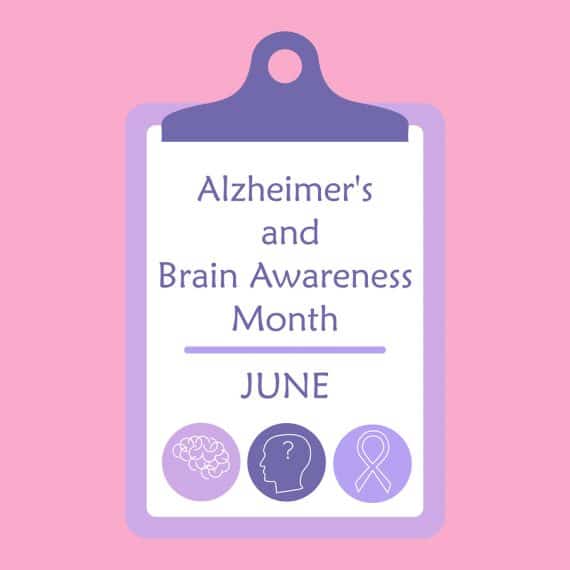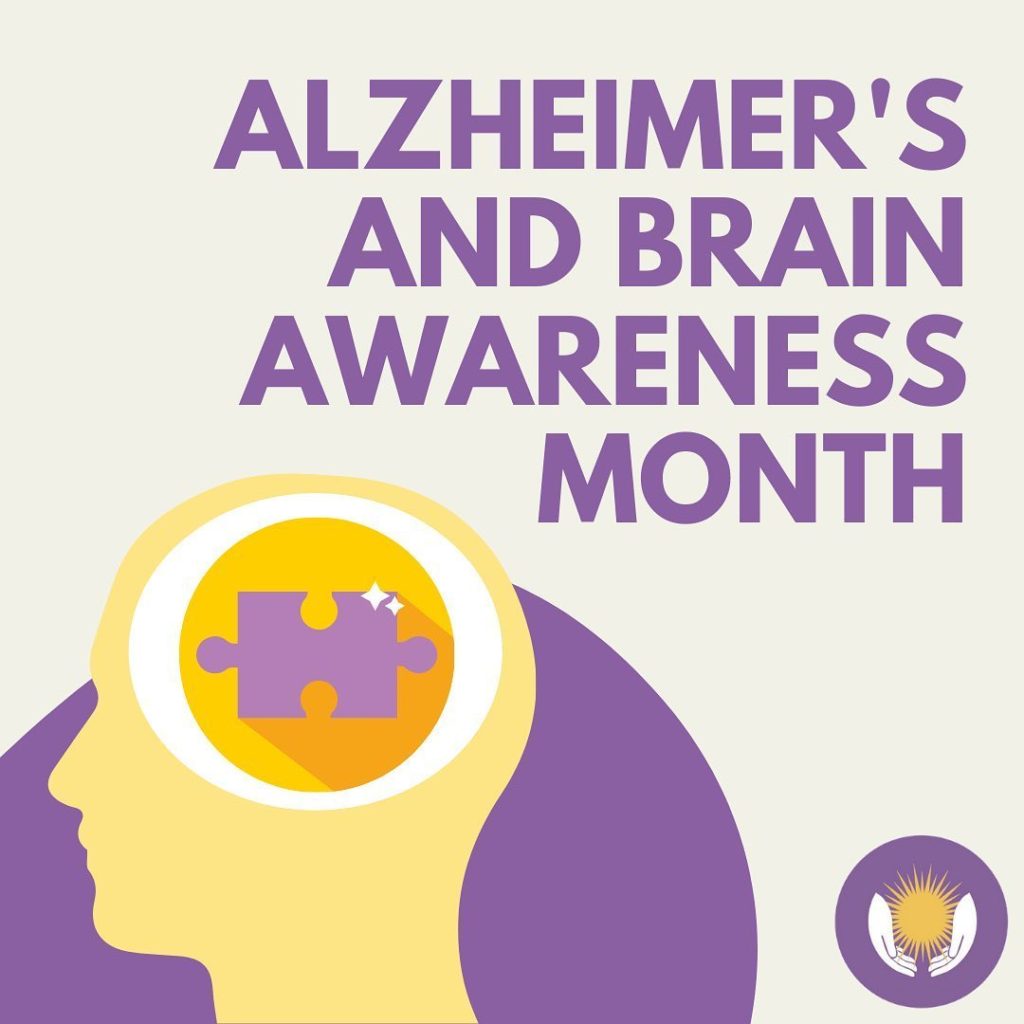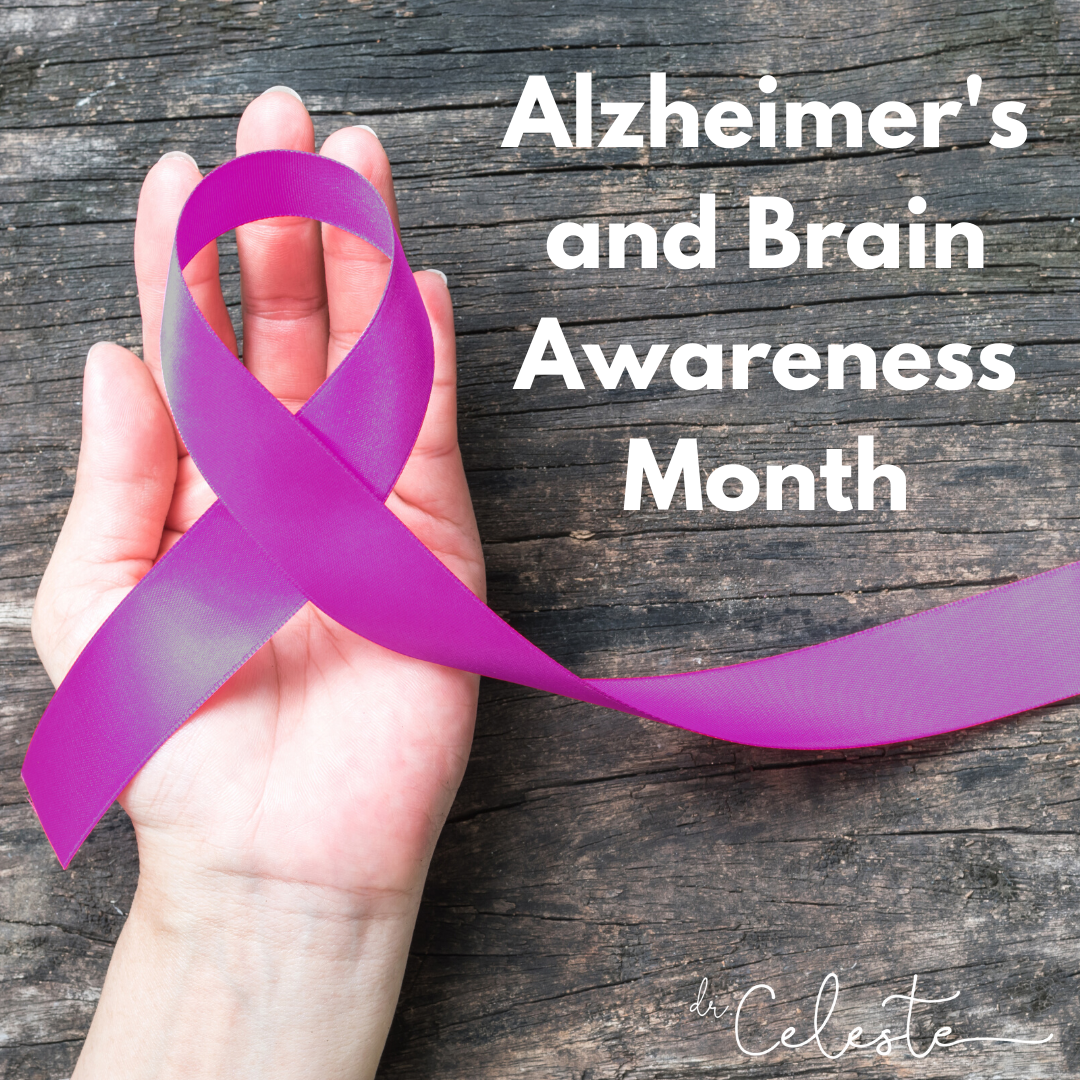How Do You Know It Is Alzheimers
Visit our Alzheimers & Dementia Care page for the 10 Warning Signs of Alzheimers. Download the PDF about the Six Tips for Approaching Alzheimers to help you talk about the disease with someone who may be experiencing symptoms.
Dementia and Alzheimers can be overwhelming for the caregiver. Day-to-day tasks such as bathing, getting dressed, meal planning and preparation fall to the caregiver along with monitoring and giving medications and getting to medical appointments.
Memory Loss That Disrupts Daily Life
It is normal to forget things from time to time, and sometimes forgetting names or appointments then remembering them later is a normal part of aging. However, forgetting recently learned information, forgetting important dates or events, asking the same questions repeatedly, and needing to rely on memory aids like notes or family members for things they used to handle on their own are all potential signs of Alzheimers.
Care For The Caregivers In Your Life
Even if you arent a caregiver yourself, chances are you may know someone who is. Be intentional this month to reach out ask for tangible and practical ways you can be a comfort and support to them as they provide care for loved ones fighting dementia. Dropping off a meal, their favorite beverage, or sending a caring text or card are wonderful ways to show your love and support.
Also Check: How To Get Help With Someone With Dementia
Ways To Love Your Brain
- BREAK A SWEAT: Engage in regular cardiovascular exercise that elevates your heart rate and increases blood flow to the brain and body. Several studies have found an association between physical activity and reduced risk of cognitive decline.
- BUTT OUT: Evidence shows that smoking increases risk of cognitive decline. Quitting smoking can reduce that risk to levels comparable to those who have not smoked.
- HEADS UP!: Brain injury can raise your risk of cognitive decline and dementia. Wear a seat belt, use a helmet when playing contact sports or riding a bike, and take steps to prevent falls.
- CATCH SOME ZZZâS: Not getting enough sleep due to conditions like insomnia or sleep apnea may result in problems with memory and thinking.
- BUDDY UP: Staying socially engaged may support brain health. Pursue social activities that are meaningful to you. Find ways to be part of your local community â if you love animals, consider volunteering at a local shelter. If you enjoy singing, join a local choir or help at an afterschool program. Or, just share activities with friends and family.
- STUMP YOURSELF: Challenge and activate your mind. Build a piece of furniture. Complete a jigsaw puzzle. Do something artistic. Play games, such as bridge, that make you think strategically. Challenging your mind may have short and long-term benefits for your brain.
Understanding Alzheimer’s And Dementia

Alzheimer’s is the most common cause of dementia, a general term for memory loss and other cognitive abilities serious enough to interfere with daily life. Alzheimer’s disease accounts for 60-80% of dementia cases.
Alzheimer’s is not a normal part of aging.
The greatest known risk factor is increasing age, and the majority of people with Alzheimer’s are 65 and older. Alzheimers disease is considered to be younger-onset Alzheimers if it affects a person under 65. Younger-onset can also be referred to as early-onset Alzheimers. People with younger-onset Alzheimers can be in the early, middle or late stage of the disease.
Alzheimer’s worsens over time.
Alzheimer’s is a progressive disease, where dementia symptoms gradually worsen over a number of years. In its early stages, memory loss is mild, but with late-stage Alzheimer’s, individuals lose the ability to carry on a conversation and respond to their environment. On average, a person with Alzheimer’s lives 4 to 8 years after diagnosis but can live as long as 20 years, depending on other factors.
Alzheimer’s has no cure.
Don’t Miss: Can Stress Cause Dementia Symptoms
Observing Alzheimer’s And Brain Awareness Month
There are many ways that you can observe Alzheimer’s and Brain Awareness Month and help spread awareness about this terrible disease. Here are just some examples:
- Announce your companys commitment to ending Alzheimers through social media, social channels, ad internal and external communications.
- You can either donate money online by looking up the Alzheimers Association website or you can donate your time by volunteering at charitable organizations that need dedicated volunteers and encourage others to participate as well.
- Communities around the world hold public events and seminars to spread awareness about Alzheimers. Take part in them and find out more about the diseases and how you can contribute to the fight.
- Purple represents the fight against Alzheimers. Share an image of you wearing purple and show your solidarity in the fight against Alzheimers. Use the hashtag #EndAlz and #AlzheimersAndBrainAwarenessMonth.
What Type Of Doctor Treats Alzheimers
A Neurologistspecializes in neurological disorders, including diseases of the brain and the nervous system. Currently, there is no cure for Alzheimers disease. There are medicines that can slow the progression of Alzheimers. These medicines help individuals carry out their daily activities. They can also help with some of the behavioral and personality changes.
Read Also: What Is The Most Common Form Of Dementia
Difficulty With Familiar Tasks
Having a hard time completing tasks related to their daily routine can also indicate Alzheimers. Familiar tasks can include: making a grocery list, driving to a familiar location, or remembering the rules to a favorite game. Although an individual may struggle occasionally when doing microwave settings or TV recordings, this is considered to be normal as long as these are not part of their daily routine.
How Alzheimers Affects The Brain
In order to better understand the difference between Alzheimers and dementia is to evaluate just how Alzheimers affects the brain. However, we must first know a little more about the brain itself. The human brain weighs approximately three pounds and contains three main parts:
- Cerebrum: makes up the majority of the brain and fills up most of the skull. The cerebrum is responsible for remembering, problem solving, thinking, feeling, and movement.
- Cerebellum: found on the back of the head, just under the cerebrum. The cerebellum is responsible for coordination and balance.
- Brain Stem: found on the back of the head, just under the cerebrum and in front of the cerebellum. In addition to connecting the brain to the spinal cord, the brainstem is also responsible for automatic functions like breathing, digestion, heart rate, and blood pressure.
Don’t Miss: How To Get An Alzheimer’s Diagnosis
Visit Loved Ones Fighting The Disease
Spend some extra time with loved ones who are fighting dementia. In the early stages of dementia, your loved ones need your support as they may be fearful of the progression of the disease. In-person visits are just as important for loved ones in the later stages of dementia. Studies show that spending time with loved ones is crucial to well-being in the later stages of the disease, even after they are unable to recognize visitors.
What Is The Longest Day
As a culmination of Alzheimers and Brain Awareness month, the Alzheimers Association celebrates The Longest Day on June 20th. This is a day of significance as it is the summer solstice and the day with the most sunlight. On this day people across the world will fight the darkness of Alzheimers through a fundraising activity of their choice.
Read Also: Can Alzheimer’s Be Diagnosed With A Pet Scan
What Is Alzheimers Disease
Alzheimers disease is a degenerative brain disease. Alzheimers is a type of dementia that causes problems with memory loss and cognitive abilities. Researchers believe that Alzheimers disease begins 20 years or more before you notice symptoms. Symptoms occur because nerve cells in parts of the brain have been damaged or destroyed. Symptoms usually develop slowly and worsen over time, interfering with an individuals ability to perform everyday activities.
In the early stages, memory loss is mild, and the individual is said to have dementia due to Alzheimers disease, or Alzheimers dementia. In the late-stage of Alzheimers, neurons in parts of the brain that enable a person to carry out basic bodily functions are affected. Individuals lose the ability to carry on a conversation, walk or swallow. The cause may include a combination of genetic, environmental, and lifestyle factors.
Create A Family Legacy

Work with a loved one to go through photos, reliving good memories, and maybe even creating a new photo book or video. Spending the time with loved ones, creating a bond, and creating a family legacy for generations to come is a great way to preserve family memories while engaging family members from old to young.
Don’t Miss: Is There Any Medication For Dementia
Changes In Mood And Personality
Being irritable when someone changes your routine is considered a normal reaction. However, becoming confused, suspicious, depressed, fearful, or anxious can be signs of Alzheimers. Oftentimes people with Alzheimers are easily upset when they are uncomfortable.
If you notice any of these early signs of Alzheimers disease, then it is important to make an appointment with your neurologist to be evaluated. Although no one wants to be diagnosed with Alzheimers disease, an early diagnosis has several benefits such as: allowing you to focus on your health, opportunities to participate in clinical trials, access to resources and support programs, and an ability to plan for the future.
Dr. Kashouty, a diplomate of the American Board of Psychiatry and Neurology , practices general neurology with fellowship trained specialization in clinical neurophysiology. Dr. Kashouty finds the form and function of the nerves and muscles the most interesting part of neurology, which is what led him to specialize in neurophysiology with more emphasis on neuromuscular conditions. He treats all neurological diseases, but his main focus is to treat and manage headaches, movement disorders and neuromuscular diseases.
Meaningful Ways To Participate In Alzheimers & Brain Awareness Month
While most fundraising will take place on The Longest Day, there are several simple ways to participate in raising awareness for Alzheimers disease and dementia throughout the month. From simply wearing purple to hosting a fundraiser, everyone can do something to make a positive impact in the fight against Alzheimers this month.
Here are 13 ideas to get you started:
Don’t Miss: Should Dementia Patients Drink Alcohol
How To Participate In Alzheimers And Brain Awareness Month
During the month of June, the Alzheimers Association asks people around the world to go purple and use their brains to fight this devastating disease. There are a variety of ways to get involved with friends, family, and in your workplace.
Go Purple:
Choose a day to Go Purple, have your family/friends dress in purple, decorate your office or host an event to benefit Alzheimers research. Many people choose June 20th The Longest Day to participate and Wear Purple!
Honor:
Many people have been touched by Alzheimers Disease or dementia. They may have a friend or family member who is living with these diseases or acting as a caregiver. Show your support by organizing a team and honoring those individuals throughout the month and on The Longest Day. In addition, sign up to join the Walk to End Alzheimers in your local area to raise awareness and funds for research throughout the year.
Educate:
Speak with friends, family, and co-workers about the importance of this month. Create social media posts and start conversations surrounding this important topic. The more awareness that is spread about these topics is crucial for understanding how to treat them, care for those who are suffering from them, and ultimately funding research for a cure.
Participate:
Donate to our Walk to End Alzheimers Teams below:
Wear Purple On June 20
The Longest Day is the day with the most light the summer solstice. On June 20, people from across the world fight the darkness of Alzheimers through a favorite activity of their choice. Although participation in The Longest Day may be a little different this year due to social distancing, there are still plenty of fun things you can do at home to engage friends, family and even coworkers virtually. Simply find something you love doing and utilize it to raise funds or awareness for Alzheimers and dementia related research. If organizing an event is just not possible right now, thats okay! You can still wear purple to show your love and support.
Also Check: What Happens When You Have Alzheimer’s
Early Detection From Health Professionals Can Make All The Difference
While its important to stay educated and informed about Alzheimers signs and symptoms, dont overlook the importance of including healthcare professionals early on. Early detection of degenerative disorders can make all the difference in intervention and treatment options.
When you or a loved one sees your primary care doctor, make sure to highlight any concerns you might have about changing behavior, memory loss, or lapses in concentration. Your primary doctor may be able to ask some preliminary questions to see if you are at risk of Alzheimers. In other cases, you might be referred to a specialist who can evaluate your cognitive and psychological state.
In addition, you may not realize that there are some unique ways to detect Alzheimers Disease. For example, testing someones sense of smell can highlight people with a greater chance of having dementia. In addition, hearing loss can sometimes be a sign of brain atrophy. Scheduling an audiology appointment may be a useful tool in identifying early stages of dementia and getting the help you need.
Characteristics Of The Brain With Alzheimers
Many molecular and cellular changes take place in the brain of a person with Alzheimers disease. Beta-Amyloid Protein comes in different molecular forms that collect between neurons and disrupt cell function.
Neurofibrillary Tangles are abnormal accumulations of the tau protein that collect inside neurons. The tau protein detaches from microtubules and sticks to other tau molecules to form tangles inside neurons. Abnormal tau accumulates in specific brain regions involved with the memory. As the level of beta-amyloid increases, tau spreads rapidly throughout the brain. Evidence suggests that Alzheimers brain changes may result from a complex interplay among abnormal tau and beta-amyloid proteins and several other factors.
Chronic Inflammation may be caused by the buildup of glial cells. These cells help keep the brain free of debris. One type of glial cell, microglia, destroys waste and toxins in a healthy brain. In Alzheimers patients, microglia fails to clear away waste, toxins, and beta-amyloid plaques. The TREM2 gene tells the microglia cells to clear beta-amyloid plaques from the brain and help fight inflammation in the brain. Astrocytes, another type of glial cell, help clear the buildup of plaques and other cellular debris left behind. These microglia and astrocytes collect around the neurons but fail to perform their debris-clearing function. They release chemicals that cause chronic inflammation and damage the neurons they are meant to protect.
Don’t Miss: How Close Is A Cure For Alzheimer’s
Look Who Is Going Purple
Tony BennettBrandee Evans, actorMichael Chiklis, actorAutumn Chiklis, actorZack Ward, actorMontana Tucker, singerLaurie Hernandez, professional gymnastYvette Nicole Brown, actorOscar NunezKimberly Williams-Paisley, actorJeff Henderson, Olympic gold medalist, track and fieldRita Wilson, actor Madison Cowan, celebrity chefDavid Hyde Pierce, actor
Improve Cognitive Health During Alzheimers & Brain Awareness Month

Posted on June 22, 2021 by ODPHP
June is Alzheimers & Brain Awareness Month, a time when people around the nation are having conversations about their own cognitive health and discussing cognitive well-being with friends, family members, and health care providers. The public health community can leverage these conversations to support healthy cognitive functioning throughout the entire year.
Because Alzheimers develops over time often over many years, if not decades public health professionals have many opportunities to take action. These include:
- Addressing the risk factors for dementia among vulnerable populations
- Advancing early detection and diagnosis of mild cognitive impairment and dementia
- Improving safety and quality of care for people living with dementia
- Providing better support to caregivers
Around the country, the public health community has the opportunity to elevate attention to cognitive health, Alzheimers, and caregiving issues. To find additional resources, data, and information to take action, visit:
Don’t Miss: What Are Dementia Patients Thinking
For Dementia Patients Who May Forget To Stay Hydrated Jelly Drops
For the summer solstice on June 21, the Alzheimers Association will hold its annual The Longest Day event, inviting all those affected by the disease to participate in a fundraising activity of their choice and to create a fundraising page on the organizations website. A mobile app for the fundraiser is available for download.
The association offers a number of ideas for fundraisers, in categories that range from exercise, sports, and gaming to parties and events, hobbies, and arts. It also provides ideas about how to incorporate physical distancing into events because of COVID-19. A fundraising page doesnt need to be tied to an activity, the group notes, and can instead be for a life milestone, such as a graduation, wedding, or birthday.
The Greensboro Grasshoppers, a minor league baseball team in North Carolina, will be supporting the Alzheimers Association throughout June as part of its Alzheimers Association Awareness Nights, with events sponsored by Bankers Life and marking the 20th anniversary of the companys partnership with the association. Bankers Life is asking fans to wear purple to the teams June 3, June 17, and June 24 home games, and will give purple sunglasses to the first 300 spectators who stop by its table for the June 24 game. Alzheimers jerseys will also be worn by players and auctioned off for the Alzheimers Association Western Carolina Chapters The Longest Day campaign.